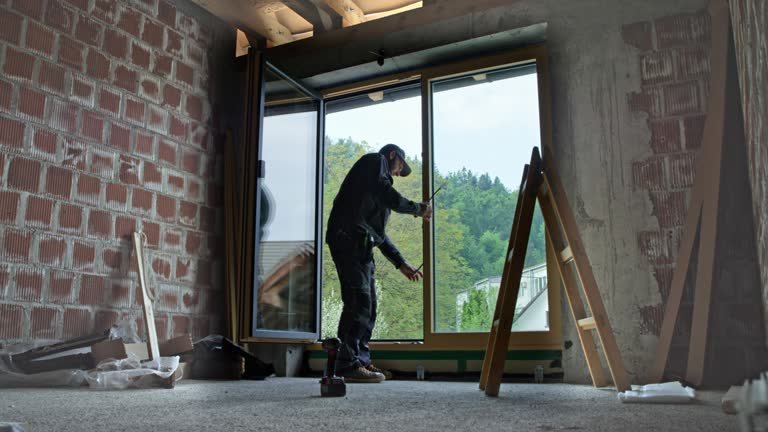Installing a Lazy Susan corner cabinet is one of the best ways to maximize the space in your kitchen. It allows you to access those tricky corner areas with ease, making your kitchen more functional and organized. Whether you’re remodeling or setting up a new kitchen, this step-by-step guide will walk you through the installation process. By the end, you’ll have a fully operational Lazy Susan that optimizes your kitchen’s storage potential.
1. Gather Your Tools and Materials
Before starting the installation, make sure you have all the necessary tools and materials ready. Here’s what you’ll need:
- Lazy Susan corner cabinet kit
- Drill and drill bits
- Measuring tape
- Level
- Screws
- Pencil or marker
- Screwdriver
Having everything at hand will ensure a smooth and efficient installation process.
2. Prepare the Space
Before installing your Lazy Susan, it’s essential to prepare the corner space where the cabinet will go. Start by cleaning the area to remove any dust or debris. Ensure that the walls and floors are level. Uneven surfaces can lead to problems later in the installation, so use a level to check everything.
Measure the Corner
Measure the dimensions of your corner to make sure the cabinet will fit properly. Most Lazy Susans are designed to fit standard kitchen dimensions, but it’s always a good idea to double-check your measurements before proceeding.
3. Assemble the Lazy Susan Cabinet
Most Lazy Susan cabinets come pre-assembled, but in some cases, you may need to assemble parts of it yourself. Follow the manufacturer’s instructions to piece together the shelves and rotating mechanism. Be sure that the rotation is smooth and that all parts are securely connected.
4. Position the Cabinet in the Corner
Once the Lazy Susan is assembled, place the cabinet into the corner space. Use a level to ensure the cabinet is perfectly aligned. Adjust the cabinet’s position as needed to ensure it sits flush against the walls. You may need to shim the cabinet if your floors or walls aren’t completely level.
5. Secure the Cabinet to the Wall
After positioning the cabinet, it’s time to secure it to the wall. Drill pilot holes into the cabinet’s back panels and the wall studs. Use screws to attach the cabinet to the wall, ensuring it is firmly anchored. Make sure to tighten the screws securely but avoid overtightening, as this could damage the cabinet.
Double-Check Alignment
Before moving forward, double-check that the cabinet is still level after securing it. This step is critical to ensure smooth operation of the Lazy Susan mechanism.
6. Install the Lazy Susan Shelves
With the cabinet in place, it’s time to install the rotating shelves. Follow the instructions provided by the manufacturer to secure the shelves to the central pole. Make sure they spin freely and without obstruction. The shelves should be installed at different heights to maximize the use of vertical space.
For more tips on making the most of your kitchen corners, you can explore different types of Lazy Susan corner cabinets and their benefits.
7. Attach the Cabinet Door
The next step is to attach the cabinet door. Most Lazy Susan cabinets have a door that is hinged to rotate with the shelves, but some designs feature a bifold door. Use the manufacturer’s instructions to properly align and attach the door to the cabinet frame. Test the door to ensure that it opens and closes smoothly, without catching on the cabinet edges.
Adjust Hinges if Needed
If the door doesn’t sit properly, you may need to adjust the hinges. Many modern cabinets have adjustable hinges that can be tightened or loosened to correct alignment issues.
8. Final Adjustments
Once the Lazy Susan is installed and the door is attached, make any final adjustments. Ensure that the shelves rotate smoothly and that the cabinet door opens without sticking. If needed, make slight adjustments to the hinges, leveling, or rotating mechanism.
9. Clean Up
Now that your Lazy Susan is installed, clean up any debris from the installation process. Wipe down the shelves and the cabinet interior to remove dust and fingerprints. Your new Lazy Susan corner cabinet is ready for use!
Conclusion
Installing a Lazy Susan corner cabinet is a relatively simple project that can dramatically improve the storage and functionality of your kitchen. By following these steps, you’ll have a fully operational cabinet that helps you make the most of those hard-to-reach corners.
If you’re interested in learning more about Lazy Susan corner cabinet options for your kitchen, be sure to explore our wide selection. Each design is crafted to enhance your kitchen’s efficiency and style.








